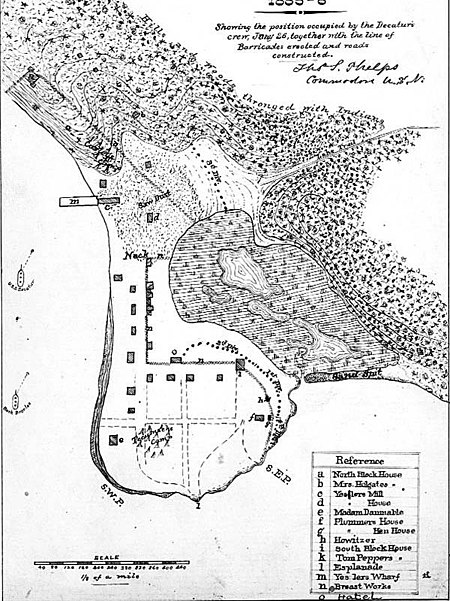Battle of Seattle (1856)

The Battle of Seattle was a January 26, 1856 attack by Native American tribesmen upon Seattle, Washington. At the time, Seattle was a settlement in the Washington Territory that had recently named itself after Chief Seattle (Sealth), a leader of the Suquamish and Duwamish peoples of central Puget Sound.European-American settlers were backed by artillery fire and supported by Marines from the United States Navy sloop-of-war Decatur, anchored in Elliott Bay (Seattle's harbor, then called Duwam-sh Bay). They suffered two fatalities. It is not known if any of the Native American raiders died. The contemporary historian T. S. Phelps wrote that they later "would admit" to 28 dead and 80 wounded. The battle, part of the multi-year Puget Sound War or Yakima Wars (1855-1858), lasted a single day.
Excerpt from the Wikipedia article Battle of Seattle (1856) (License: CC BY-SA 3.0, Authors, Images).Battle of Seattle (1856)
South Main Street, Seattle Yesler Terrace
Geographical coordinates (GPS) Address Nearby Places Show on map
Geographical coordinates (GPS)
| Latitude | Longitude |
|---|---|
| N 47.6 ° | E -122.31666666667 ° |
Address
South Main Street 1211
98144 Seattle, Yesler Terrace
Washington, United States
Open on Google Maps











